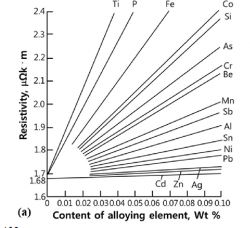60jarek wrote: People buy the cheapest crap, and then they are surprised at the end result. You can count for yourself what happens by the difference of a few ohms in the installation - I have given my attention what to pay attention to when buying or choosing a cable.
60jarek wrote: In our society, when choosing a cable, only the cable cross-section is taken into account, and whether for plastering or outside, the rest of the things are neglected.
"They buy the wrong cable - surprised that he often blows out the fuses and heats up - so they advise him to use a thicker cable - the effect is that the installation is even worse. And it was enough to buy a cable with the appropriate parameters and enjoy the effect of our installation for years"
So far, the problem has not occurred in "power" cables, although crap coaxial / antenna cables were common.
Maybe that is why the problem does not occur that people do not buy a cable, but call an electrician and he is responsible for choosing such a cable that everything works as it should - consumer incompetence spoils every market, makes it easier to cheat, but when consumers are professionals, it is difficult to crap.
Probably that's why it's easy to buy an extension cord with a cheated cross-section, and I haven't seen the cheated 100m disc yet.
60jarek wrote: I do not get into discussions about the alloys and the composition of alloys for the production of the conductor.
What I wrote about is quite important from the point of view of the profitability of cheating, if it is difficult to gain advantage, the probability of fraud will be lower.
The topic is from over a decade ago, so the author solved a long time ago and forgot about that problem.
It would make sense to add something if it added something to the topic.
I am sorry to say that your entry does not bring anything useful, it is just arousing fear, so far unsupported. In every area you can frighten with poor quality, but there are also areas where you can take the first better product from the shelf and it will be good, I don't buy cables very often, so I cannot assess the market in 100%, but until recently it was the case with cables.
If someone breaks the fuses and the cable heats up, it should stop damaging the craft and call an electrician, no miraculous cable will solve the problem.
If you want to ask electricians if the problem of poor cable resistance exists, not in some old random topic, but create a new topic in the section where electricians often write.



